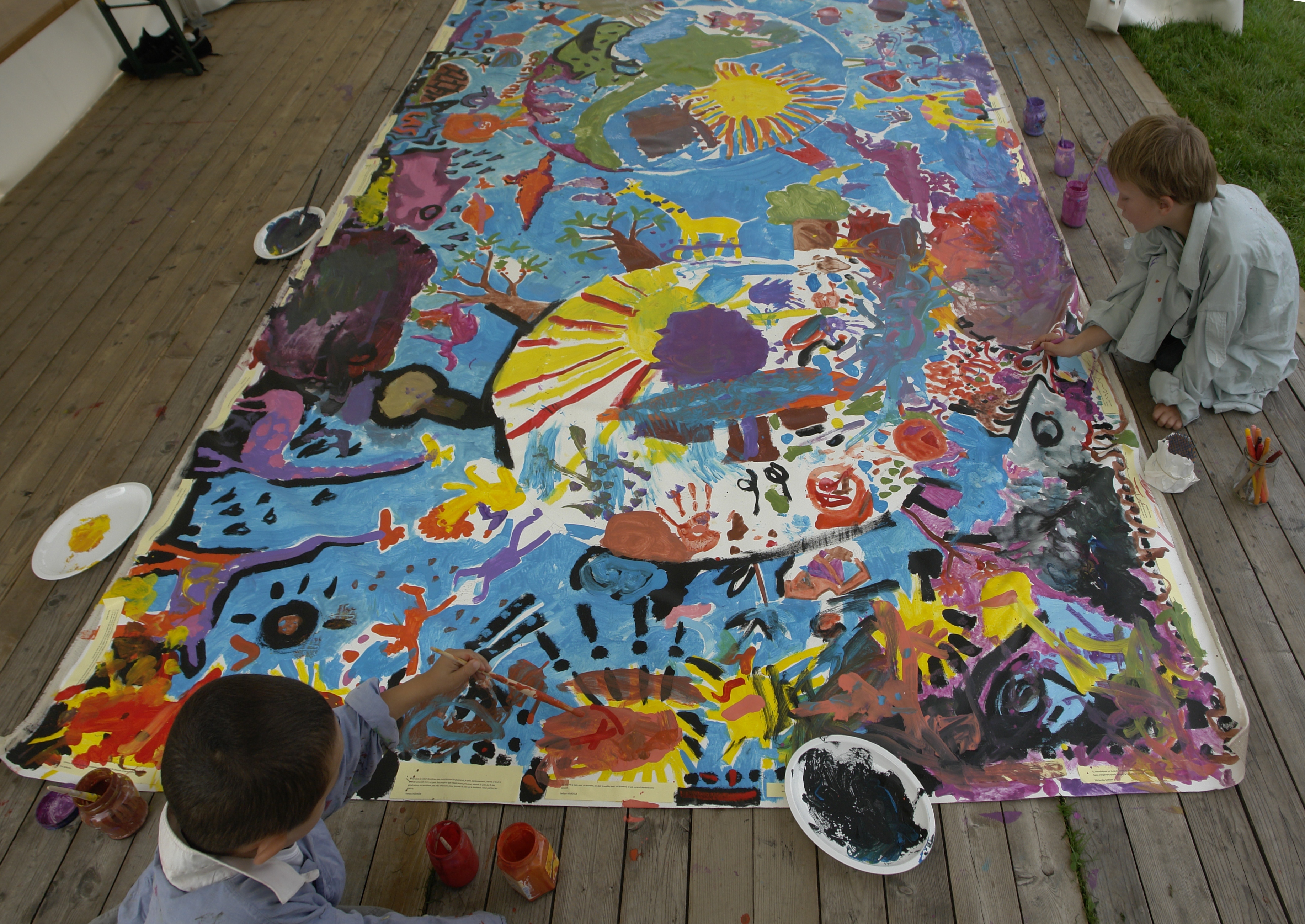
What are Plastic Arts?
Plastic arts is the set of artistic manifestations constituted by painting, architecture, sculpture, textile art and all human expression that transforms materials into images and objects with artistic meaning.

The plastic arts are evaluated for their form and content. Each era, such as the Romanesque, Gothic, Baroque or Renaissance, has individual characteristic styles, with their own evolution, whose investigation is the object of art history.
A work of art is not always related to the conception of beauty determined by classical ideals. Today it is understood that art has other "functions" in addition to displaying an aesthetic or harmonious rigor, the most important being the communication and expression of a worldview.
The plastic arts are also an important means of developing children's imaginative expression, and the purpose of all branches of arts education is to help develop the unconscious impulse to create.

When creating works of art, it is important to consider the social, political, religious context, maturity and subjectivities of each artist, as well as the way works are received in each time and place.
The Christian faith and the liturgical life were, until the beginning of the Baroque period, the most important forces that encouraged Western art. However, from the Renaissance onwards, there was a gradual separation of art from religious purposes, and interest in purely aesthetic works was gradually strengthened.
The consequence of this development was the emergence, in the 19th century, of the ideology of art for art's sake, which materialized less in the visual arts than in literature and music.
Art schools and academies dedicated themselves to teaching the visual arts. Museums, which often have their origins in private foundations, have the mission of caring for the artistic heritage of the past and preserving important works of contemporary art.
These institutions make paintings, sculptures, graphic works and artistic crafts accessible to the public. They also carry out the necessary restorations and often organize special and traveling exhibitions. They take care of the conservation of historical monuments and also make contracts with famous artists, transmit knowledge in the field of youth and adult education, edit publications and carry out exchanges of different artists and cultures.

Local art associations, guided by private foundations and public subsidies, are dedicated to exhibitions and conferences. Since the 18th century, they have occupied an important place in the conservation and promotion of art.
Art critics inform the public about events and issues in contemporary art. They are not limited to pronouncing on exhibitions and works of art, but exercise an artistic pedagogy.
The International Association of Art Critics has been since 1948 the international organization that encompasses all associations of critics.
https://www.significados.com.br/artes-plasticas/

- April 21, 2025
Gibara International Low-Fat Film Festival 2025

- April 21, 2025
An Immersion in the Beginnings of a Fundamental Artist

- April 21, 2025
Latin American Art in Qatar

- April 21, 2025
Gallery Of Graphic Design By Sina Afshar - Iran

- April 21, 2025
Gallery Of Painting By Tyler Turnbull - USA

- April 21, 2025
Gallery Of Illustration By Maxim Obsidianbone - Ukraine


- April 20, 2025
Gallery Of 2025 World Press Photo Contest (Series B)

- April 20, 2025
Gallery Of 2025 World Press Photo Contest (Series A)

- April 20, 2025
The Influence of Technology on the Revo…

- April 19, 2025
Analysis of Picasso's Artistic Style an…

- April 19, 2025
Artificial Intelligence and the Future …

- April 17, 2025
12 Houses with Art Studios in Latin Ame…

- April 16, 2025
Famous 20th-Century Painters and Their …

- April 14, 2025
Analysis of Artistic Works Created with…

- April 13, 2025
From Digital Art to Contemporary Art

- April 13, 2025
The Expansion of Photography

- April 12, 2025
When is photography considered art?

- April 10, 2025
Impact of AI on the Diversity of Artist…

- April 10, 2025
How can AI enhance artistic creativity?

- April 09, 2025
The Impact of Artificial Intelligence o…

- April 08, 2025
Latin American art, a goldmine of oppor…

- April 07, 2025
Contemporary Art in Brazil: Between the…

- April 07, 2025
Mexican Muralism: Art for the People

- April 06, 2025
History of graphic art in Brazil

- April 05, 2025
Modern Art: A Renaissance in Art History

- April 02, 2025
Aldo Estrada (Ilustronauta): From Peruv…

- March 31, 2025
How ChatGPT is Turning Photos into Japa…

- March 30, 2025
Arístides Hernández (ARES): A Sharp Min…

- August 29, 2023
The history of Bolivian art

- February 19, 2024
Analysis and meaning of Van Gogh's Star…

- January 28, 2024
Culture and Art in Argentina

- September 25, 2023
What is the importance of art in human …

- September 23, 2023
What is paint?

- August 10, 2023
14 questions and answers about the art …

- August 30, 2023
First artistic manifestations

- August 23, 2023
The 11 types of art and their meanings

- September 23, 2023
History of painting

- August 16, 2023
The 15 greatest painters in art history

- March 26, 2024
The importance of technology in art1

- April 06, 2024
History of visual arts in Ecuador

- January 20, 2024
What is the relationship between art an…

- March 26, 2024
Cultural identity and its impact on art…

- January 31, 2024
Examples of Street Art – Urban Art

- September 23, 2023
Painting characteristics

- April 07, 2024
Graffiti in Latin American culture

- August 25, 2024
A Comprehensive Analysis of the Cartoon…

- October 21, 2023
Contemporary art after the Second World…

- March 05, 2024
The art of sculpture in Latin America

- February 19, 2024
Analysis and meaning of Van Gogh's Star…

- August 13, 2023
9 Latino painters and their great contr…

- August 29, 2023
The history of Bolivian art

- August 10, 2023
14 questions and answers about the art …

- January 28, 2024
Culture and Art in Argentina

- August 23, 2023
The 11 types of art and their meanings

- November 06, 2023
5 Latin American artists and their works

- September 23, 2023
Painting characteristics

- August 27, 2023
15 main works of Van Gogh

- September 23, 2023
What is paint?

- September 25, 2023
What is the importance of art in human …

- August 30, 2023
First artistic manifestations

- January 20, 2024
What is the relationship between art an…

- December 18, 2023
10 iconic works by Oscar Niemeyer, geni…

- January 12, 2024
10 most beautiful statues and sculpture…

- October 30, 2023
Characteristics of Contemporary Art

- March 26, 2024
Cultural identity and its impact on art…

- August 22, 2023
What are Plastic Arts?

- April 16, 2024
The most important painters of Latin Am…

- October 11, 2023


